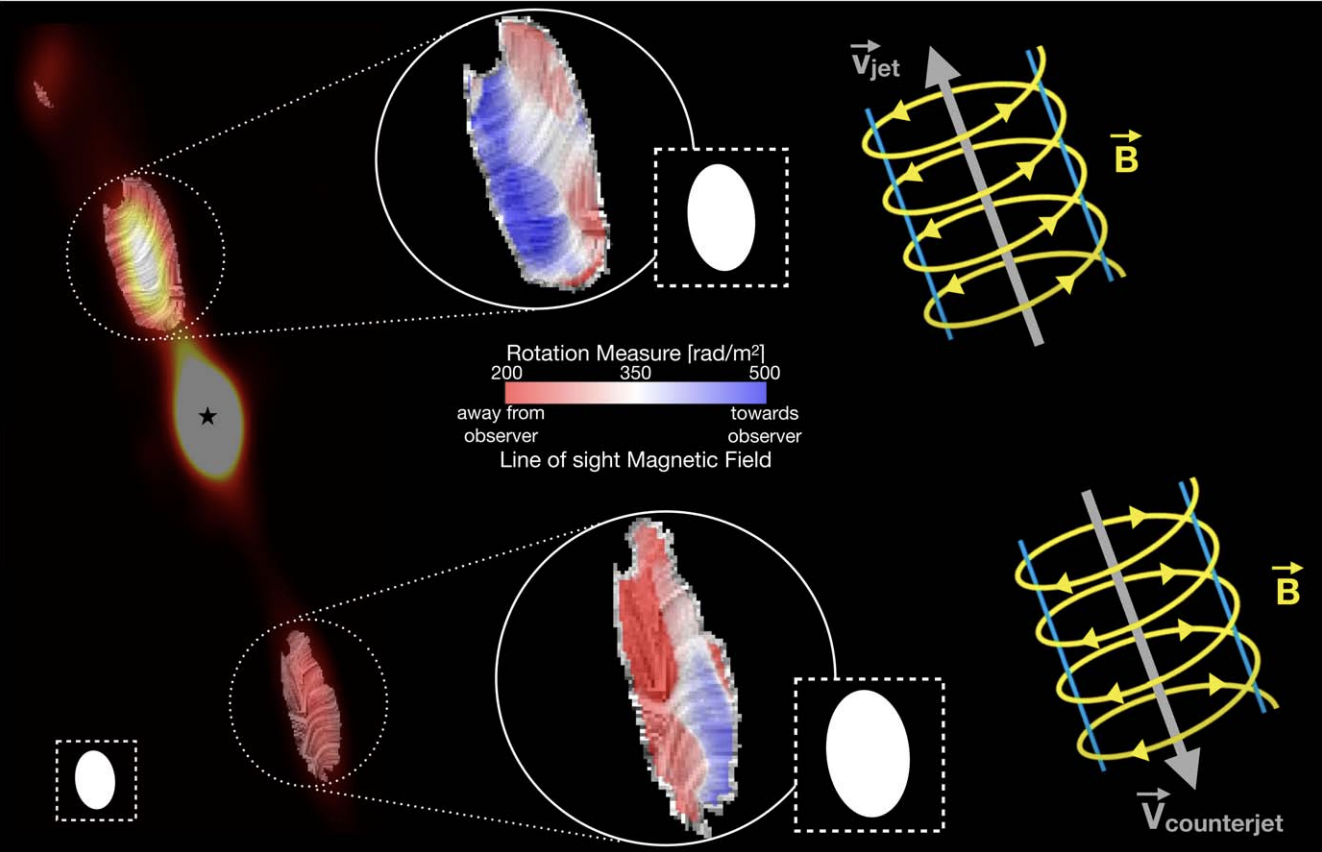
Credit: Rodríguez-Kamenetzky et al. 2025, The Astrophysical Journal.
New observations from the National Science Foundation National Radio Astronomy Observatory’s (NSF NRAO) Karl G...
Read More

New observations from the National Science Foundation National Radio Astronomy Observatory’s (NSF NRAO) Karl G...
Read More
Radio observations of Compact Symmetric Objects (CSOs) provide new window on black holes. Astronomers have concluded that an obscure class of galaxies known as Compact Symmetric Objects, or CSOs, are not young as previously thought but rather lead relatively short lives.
A new investigation into an obscure class of galaxies known as Compact Symmetric Objects, or CSOs, has revealed that these objects are not entirely what they seem...
Read More
It takes more than a galaxy merger to make a black hole grow and new stars form: machine learning shows cold gas is needed too to initiate rapid growth — new research finds.
When they are active, supermassive black holes play a crucial role in the way galaxies evolve. Until now, growth was thought to be triggered by the violent collision of two galaxies followed by their merger, however new research led by the University of Bath suggests galaxy mergers alone are not enough to fuel a black hole — a reservoir of cold gas at the centre the host galaxy is needed too.
The new study, published this week in the journal Monthly Notices of the Royal Astronomical Society is believed to be the first to use machine learnin...
Read More
Researchers have discovered the oldest black hole ever observed, dating from the dawn of the universe, and found that it is ‘eating’ its host galaxy to death.
The international team, led by the University of Cambridge, used the NASA/ESA/CSA James Webb Space Telescope (JWST) to detect the black hole, which dates from 400 million years after the big bang, more than 13 billion years ago. The results, which lead author Professor Roberto Maiolino says are “a giant leap forward,” are reported in the journal Nature.
That this surprisingly massive black hole — a few million times the mass of our Sun — even exists so early in the universe challenges our assumptions about how black holes form and grow...
Read More
Recent Comments